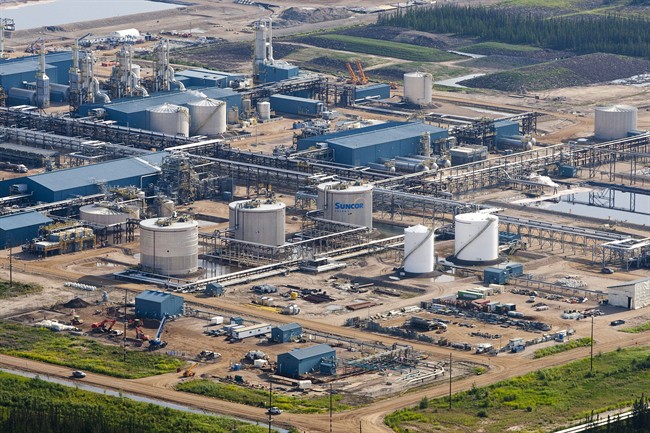An RBC report warns that Canadian oilsands producers face rising price discounts as growing production “materially exceeds” export pipeline capacity to the United States in the first quarter of 2018.

READ MORE: New oilsands project opens near Fort McMurray as industry confidence in economy builds
RBC Dominion Securities says production from the oilsands of northern Alberta is set to climb by nearly 620,000 barrels per day over the next four years to 3.3 million barrels per day in 2021 before levelling off.
READ MORE: Alberta politicians react to approval of Keystone XL pipeline through Nebraska
It says about 75 per cent of the growth will be in raw bitumen, which must be blended with light petroleum products to flow in a pipeline, thus increasing volume by another 30 to 40 per cent.
READ MORE: Could Alberta’s oil industry be rebounding?
The difference between Western Canadian Select, a diluted bitumen crude, and West Texas Intermediate, a North American benchmark for conventional oil, will widen to average US$15.50 per barrel in 2018 and US$17.50 per barrel in 2019, says the report by bank analyst Greg Pardy says.
READ MORE: TransCanada clashes with Keystone XL pipeline opponents at Nebraska hearing
On Thursday, the WCS-WTI differential was US$16.95 per barrel, swollen by recent events including reduced volumes on the Keystone pipeline system between Alberta and the U.S. Gulf Coast after a leak in South Dakota.
The wider discount for Canadian bitumen will be driven in part by increasing reliance on crude-by-rail shipments, which RBC estimates will cost producers an average of about US$4.50 per barrel more than shipping by pipeline.
- What is a halal mortgage? How interest-free home financing works in Canada
- Capital gains changes are ‘really fair,’ Freeland says, as doctors cry foul
- Budget 2024 failed to spark ‘political reboot’ for Liberals, polling suggests
- Starbucks looks likely to win U.S. Supreme Court case involving pro-union workers



Comments